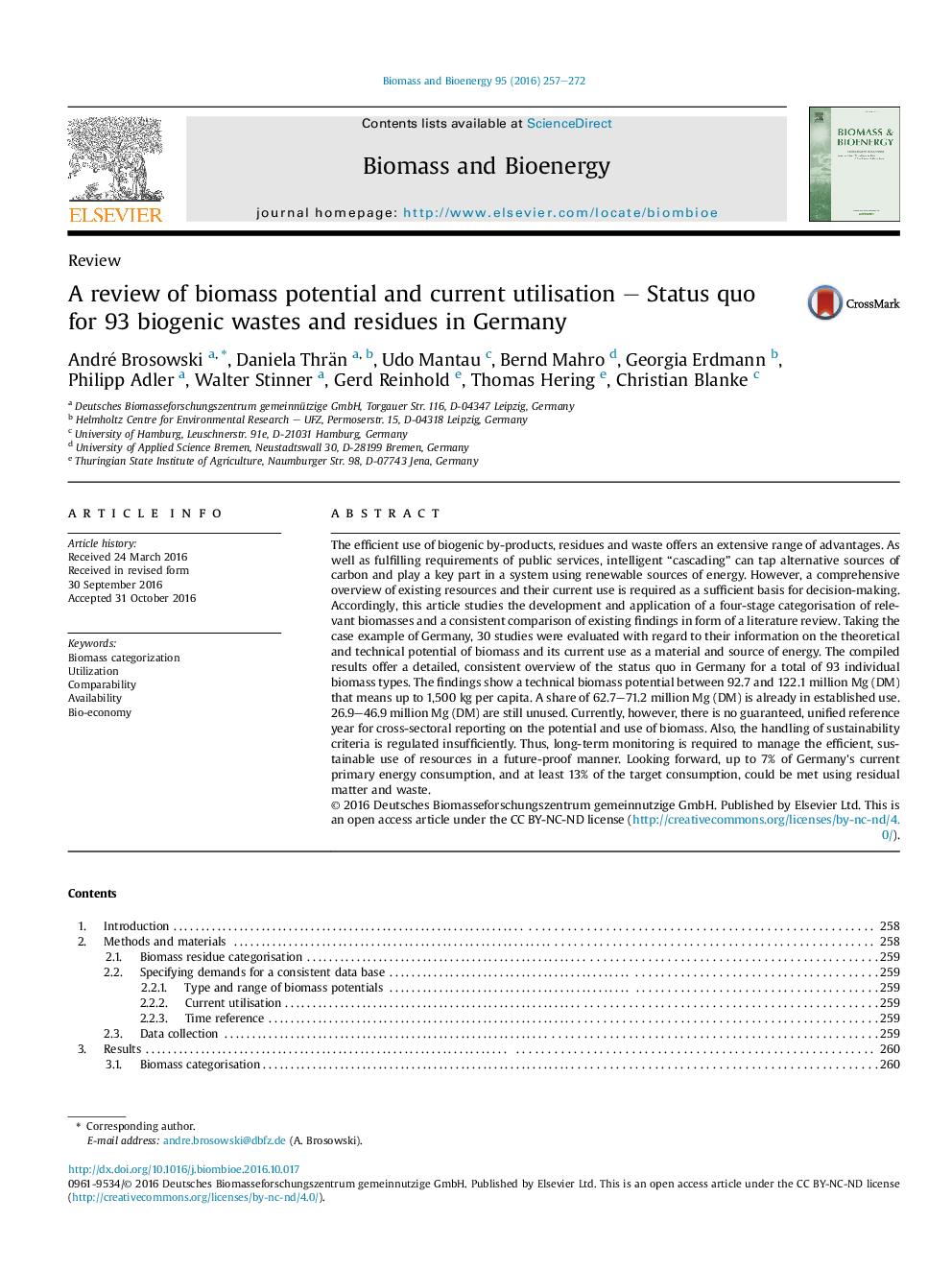| کد مقاله | کد نشریه | سال انتشار | مقاله انگلیسی | نسخه تمام متن |
|---|---|---|---|---|
| 4996377 | 1459798 | 2016 | 16 صفحه PDF | دانلود رایگان |

- The review of 30 studies presents comprehensive results for 93 biomasses.
- A methodology for a consistent biomass categorisation was determined.
- A technical biomass potential between 92.7 and 122.1 million Mg (DM) was identified.
- Up to 13% of Germany's total primary energy consumption could be met by residues.
- The necessity of a regular resource monitoring is one of the main conclusions.
The efficient use of biogenic by-products, residues and waste offers an extensive range of advantages. As well as fulfilling requirements of public services, intelligent “cascading” can tap alternative sources of carbon and play a key part in a system using renewable sources of energy. However, a comprehensive overview of existing resources and their current use is required as a sufficient basis for decision-making. Accordingly, this article studies the development and application of a four-stage categorisation of relevant biomasses and a consistent comparison of existing findings in form of a literature review. Taking the case example of Germany, 30 studies were evaluated with regard to their information on the theoretical and technical potential of biomass and its current use as a material and source of energy. The compiled results offer a detailed, consistent overview of the status quo in Germany for a total of 93 individual biomass types. The findings show a technical biomass potential between 92.7 and 122.1 million Mg (DM) that means up to 1,500Â kg per capita. A share of 62.7-71.2 million Mg (DM) is already in established use. 26.9-46.9 million Mg (DM) are still unused. Currently, however, there is no guaranteed, unified reference year for cross-sectoral reporting on the potential and use of biomass. Also, the handling of sustainability criteria is regulated insufficiently. Thus, long-term monitoring is required to manage the efficient, sustainable use of resources in a future-proof manner. Looking forward, up to 7% of Germany's current primary energy consumption, and at least 13% of the target consumption, could be met using residual matter and waste.
Journal: Biomass and Bioenergy - Volume 95, December 2016, Pages 257-272